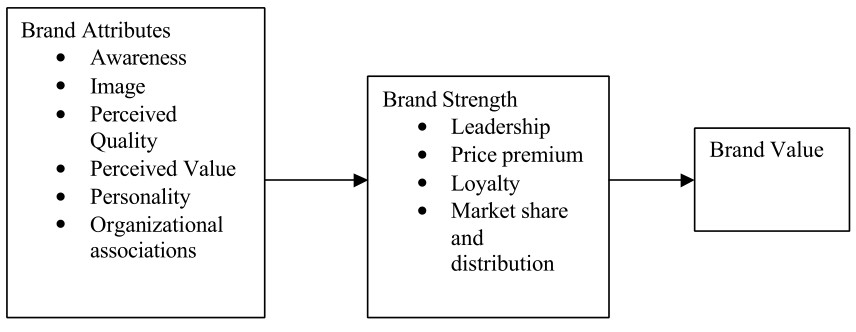To be considered for purchasing a brand must have a presence, both physically in terms of availability and psychologically in terms of awareness – Should people find the promise inherent in the brand to be relevant to their particular needs, they are more likely to progress to trying the brand, forming a view about its performance. Evaluation of the brand’s functional and emotional performance capabilities, relative to other brands, leads consumers to a view about its relative advantages. If these advantages are particularly strong they are likely to continue buying the brand and over time a bonded relationship results.
The benefit of this diagnostic is that by interviewing consumers about competing brands in a market, their profiles can be accessed on the pyramids. Through comparing these profiles, strengths and weaknesses can be identified; enabling appropriate strategies to be devised.
Measuring Brand Equity
Brands are complex concepts which can be characterized by several dimensions. Therefore, evaluating the health of a brand by measuring its brand equity necessitates taking several different measures along several different dimensions.
Our interpretation of brand equity is heavily influenced by Fieldwork’s insightful review (1996) of the literature on brand equity along with the work of Aaker (1996) and Keller (1993). We have adapted Feldwick’s model and regard brand equity as ‘the differential attributes underpinning a brand which give increased value to the firm’s balance sheet’. An important word in this definition is differential, since consumers usually evaluate a brand relative to the brands they perceive it competing against. The definition can be understood in terms of the causal model shown in Figure.


